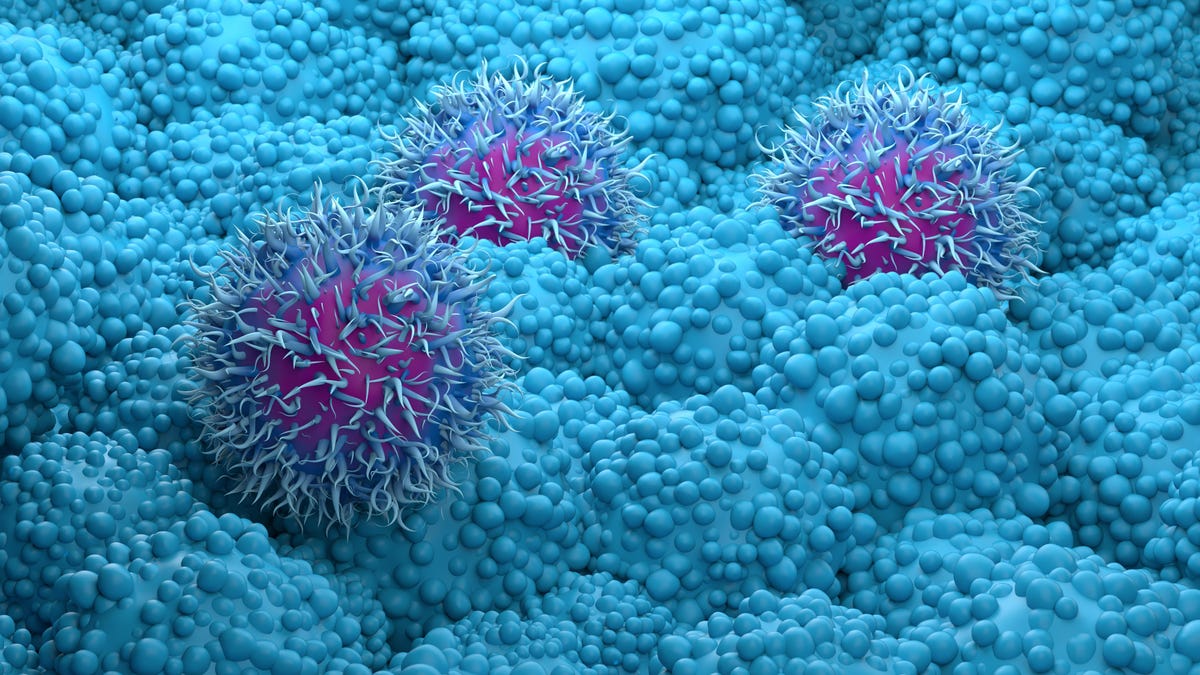A team in the UK has found a new window into cancer, thanks to a novel imaging technique that allows them to take a detailed look at the fatty cargo inside a single tumor cell. The tech could make it easier to understand how different cancers respond to specific treatments, among many other insights.
The research was led by scientists from the University of Surrey and involved others from the University of College London and the pharmaceutical company GSK (formerly known as GlaxoSmithKline), as well as the companies Yokogawa and Sciex. The team wanted to get a better view at the fatty droplets, or lipids, found inside a cancer cell, due to their medical importance.
“Lipids are an essential component of cancer cells and are required for their growth, proliferation and metastases,” senior author Melanie Bailey, a chemical engineer at the University of Surrey, told Gizmodo in an email. “They act as a source of energy for tumor cells, but also allow tumor cells to signal to other cells and recruit them.”
Bailey and her colleagues first used recently created technology from Yokogawa (the Single Cellome System SS2000) to extract intact, individual pancreatic cancer cells from a sample. These cells were stained with fluorescent dye that highlighted the lipids inside. They then worked with Sciex, producers of mass spectrometer devices, to develop a new mass spectrometry method that could break open those lipids, allowing the scientists to see their actual composition.
The researchers found that different cancer cells could have vastly different lipid profiles. They were also able to reliably see how these lipids changed in response to their environment. The work, published this week in the journal Analytical Chemistry, could pave the way for crucial discoveries about cancer.
“Since lipids are so important to the functioning of cancer cells, studying lipid profiles will allow us to gain a better understanding of how cancer cells respond to different treatments (e.g. drugs, radiation) and how they metastasize,” said Bailey. “For example, if a particular lipid pathway is implicated in radiation or drug resistance, it may be possible to target that pathway with future therapies.”
The new tech might help beyond cancer, especially since lipids are just as valuable to our healthy cells as they are to tumor cells. Bailey says her team is already working with other researchers studying lipids inside single cells across a variety of fields, including immunity, infectious diseases, and the study of our internal body clocks.
“From a technology development perspective, we are keen to see how far we can push the boundaries, to see how much information we can obtain from sub-cellular features,” she said.

